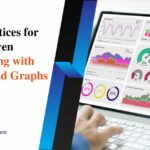Secrets to Effective Data Presentation for Clear Communication
Have you ever found yourself lost in a bundle of slides, charts, and numbers during a presentation? It’s easy to tune out when information feels more perplexing than persuasive. However, there are always ways to enhance understanding and connection with an audience. Let’s explore some expert techniques for distilling insights from data in a way that resonates through clear, compelling communication.
The Importance of Effective Data Presentation
We live in an information-driven world where data plays a key role in decision-making. As more companies collect and analyze data, it is crucial to communicate insights from that data clearly. Effective data presentation allows audiences to understand complex information and make informed choices easily. However, simply displaying data is not enough—it must be presented in a way that engages people and brings the numbers to life. By following some key secrets, you can create impactful data presentations that get results.
The Impact of Clear Communication on Decision-Making
How data is presented directly impacts whether an audience can comprehend its meaning and significance. When insights are muddied or lost in poorly designed slides, decision-makers cannot use that information effectively. On the other hand, clear communication of data through well-crafted visuals helps audiences understand issues, compare options, and agree on solutions. It facilitates consensus and action.
Leaders who can synthesize complicated analyses into stories that persuade and prompt decisions have a strategic advantage. With so much riding on interpretation, taking time to master the art of data storytelling through visual aids is vital.
Secrets to Effective Data Presentation

Here are some tried-and-true techniques for presenting data in a compelling yet simple way:
1. Know Your Audience
It’s so important to understand who will be viewing your data presentation. Things like their background, job role, existing knowledge on the topic, and goals for the meeting should all inform how you design your visuals. Try conversing with some of the key people attending to glean insights into what kind of information will be most meaningful and engaging for them. Tailoring your presentation based on qualitative factors about your audience will make a huge difference in whether they really comprehend, recall, and can apply the insights.
2. Choose the Right Visualization
When summarizing data trends and relationships, various types of charts, graphs and diagrams have their strengths. A line graph best conveys changes over time, whereas a bar chart excels at comparisons. Consider attributes of your dataset, like whether it involves multiple variables, categories or numbers, and experiment with different visual representation options. A clustered column chart could deliver clarity or a heat map reveal patterns. The visualization should aid understanding through simplicity while maintaining relevant detail.
3. Keep It Simple
Crowded slides with superfluous design features are a visualization virtuoso’s worst enemy. Pare down graphical elements and formatting to only those absolutely necessary for illustrating your main takeaways. Use thoughtful layouts that group similar data together through spacing and alignment. Limit bullet points per slide to two or three concise statements. White space gives the eye room to breathe and focus on priority data. Busy slides overwhelm while sparse ones engage.
4. Highlight Key Insights
Callouts like arrows, drawn boxes, or bold, colored text help guide audience attention precisely to the most significant findings that support your message. Rather than assuming others will infer your main points, explicitly call them out. This ensures nobody misses impactful trends, comparisons, or conclusions buried in the results. It’s your job as the presenter to make certain takeaways shine.
5. Tell a Story
Like any good story, weaving the progression of insights together into a cohesive narrative enhances retention and understanding. Provide an introduction that sets the stage for analysis, build context slide-by-slide, and then conclude by tying results back to original goals or posing the next questions. Relating quantitative outputs to a logical storyline immediately makes complex data more intuitive and memorable to all listening.
6. Use Consistent Design
Continuity between slides conveys professionalism. Keep elements like slide layout, fonts, bullet styles, and title and logo placement consistent. This visual cohesion unifies diverse content into a harmonious presentation. Establishing stable design principles pays off, especially if you regularly report to consistent stakeholders. Company branding guidelines further boost a polished, on-brand look.
7. Optimize for Your Medium
From big room projector screens to individual mobile devices, consider how audiences may view your visuals. Usability testing across formats helps ensure legibility and comprehension, no matter the technology. Size text, charts, and metrics appropriately based on likely viewing conditions to preserve clarity. Support distribution through optimized file types, too.
8. Engage Your Audience
When presenting data, it’s so easy to get lost in the numbers and lecture at an audience. But humans crave interaction and engagement, which helps cement understanding. Look for natural places throughout your presentation where you can pose open-ended questions that get people thinking and give them a chance to share perspectives. Ask for their assumptions about upcoming trends, have them predict analysis outcomes, or discuss implications. Polling software or good old-fashioned discussion can bring interactivity. Adjusting on the fly based on audience needs keeps energy levels up.
9. Practice and Refine
Presenting is a skill that improves significantly with experience. Before high-stakes client or team meetings, rehearse your presentation end-to-end with colleagues, observing their reactions and gathering feedback. Time yourself to ensure you stay within the allotted minutes. Record a dry run and review later to spot where explanations require more clarity or flow could accelerate. Incorporate suggestions that enhance visual storytelling or simplify complex issues. Repeated practice not only tightens delivery but it deepens your own understanding of the data.
The Bottom Line
In today’s information-rich environment, having data acumen is not enough. Leaders must convey insights compellingly to diverse groups through clear visual communication. By honing vital presentation secrets like understanding your audience, simplifying your message, and telling stories with data, you can ensure numbers influence decisions as intended. With practice presenting data effectively, you gain a competitive advantage when it comes to influencing outcomes through persuasive decision support.







